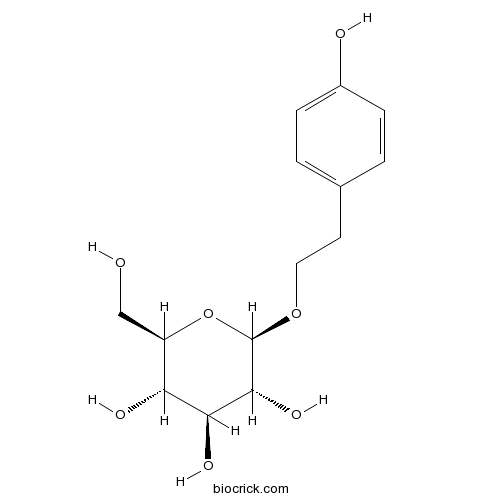Carduus acanthoides
Carduus acanthoides
1. The products in our compound library are selected from thousands of unique natural products; 2. It has the characteristics of diverse structure, diverse sources and wide coverage of activities; 3. Provide information on the activity of products from major journals, patents and research reports around the world, providing theoretical direction and research basis for further research and screening; 4. Free combination according to the type, source, target and disease of natural product; 5. The compound powder is placed in a covered tube and then discharged into a 10 x 10 cryostat; 6. Transport in ice pack or dry ice pack. Please store it at -20 °C as soon as possible after receiving the product, and use it as soon as possible after opening.
Natural products/compounds from Carduus acanthoides
- Cat.No. Product Name CAS Number COA
-
BCN5966
Salidroside10338-51-9
Instructions

Species From the Heliothinae Complex (Lepidoptera: Noctuidae) in Tucumán, Argentina, an Update of Geographical Distribution of Helicoverpa armigera.[Pubmed: 27324588]
The Heliothinae complex in Argentina encompasses Helicoverpa gelotopoeon (Dyar), Helicoverpa zea (Boddie), Helicoverpa armigera (Hübner), and Chloridea virescens (Fabricius). In Tucumán, the native species H. gelotopoeon is one of the most voracious soybean pests and also affects cotton and chickpea, even more in soybean-chickpea succession cropping systems. Differentiation of the Heliothinae complex in the egg, larva, and pupa stages is difficult. Therefore, the observation of the adult wing pattern design and male genitalia is useful to differentiate species. The objective of this study was to identify the species of the Heliothinae complex, determine population fluctuations of the Heliothinae complex in soybean and chickpea crops using male moths collected in pheromone traps in Tucuman province, and update the geographical distribution of H. armigera in Argentina. The species found were H. gelotopoeon, H. armigera, H. zea, and C. virescens. Regardless of province, county, crop, and year, the predominant species was H. gelotopoeon Considering the population dynamics of H. gelotopoeon and H. armigera in chickpea and soybean crops, H. gelotopoeon was the most abundant species in both crops, in all years sampled, and the differences registered were significant. On the other hand, according to the Sistema Nacional Argentino de Vigilancia y Monitoreo de Plagas (SINAVIMO) database and our collections, H. armigera was recorded in eight provinces and 20 counties of Argentina, and its larvae were found on soybean, chickpea, sunflower crops and spiny plumeless thistle (Carduus acanthoides). This is the first report of H. armigera in sunflower and spiny plumeless thistle in Argentina.
[Chemical constituents from whole plants of Carduus acanthoides].[Pubmed: 24199567]
Fourteen compounds were isolated from wholeplants of Carduus acanthoides by various chromatographic techniques including column chromatography over HP-20 macroporous resin, MCI gel, silica gel, Sephadex LH-20 and ODS and reversed-phase HPLC. Their structures were identified as salidroside (1), 2-(3,4-dihydroxyphenyl)-ethyl-O-beta-D-glucopyranoside (2), 3,5-di-hydroxyphenethyl alcohol-3-O-beta-D-glucopyranoside (3), p-coumaric acid (4), 3-hydroxy-1-(4-hydroxy-3-methoxyphenyl) propan-1-one (5), 3-hydroxy-1-(4-hydroxy-3,5-dimethoxyphenyl) propan-1-one (6), syringin (7), p-hydroxybenzaldehyde (8), salicylic acid (9), tachioside (10), vanillic acid-4-O-beta-D-glucopyranoside (11), syringic aldehyde (12), 2,6-dimethoxy-4-hydroxyphenol-1-O-beta-D-glucopyranoside (13), and 2, 6-dimethoxy-p-hydroquinone-4-0-P-D-glucopyranoside (14) on the basis of spectroscopic data analysiS. All compounds were isolated from the genus Carduus for the first time except for compounds 4 and 7.
Two new glycosides from Carduus acanthoides.[Pubmed: 24180213]
Two new glycosides, syringic acid-4-O-β-L-arabinopyranoside and kaempferol-3-O-α-L-rhamnopyranosyl-7-O-β-D-glucuronopyranoside, were isolated from whole plants of Carduus acanthoides (Asteraceae), and their structures were elucidated on the basis of spectroscopic analysis.
Can soil seed banks serve as genetic memory? A study of three species with contrasting life history strategies.[Pubmed: 23185340]
We attempted to confirm that seed banks can be viewed as an important genetic reservoir by testing the hypothesis that standing (aboveground) plants represent a nonrandom sample of the seed bank. We sampled multilocus allozyme genotypes from three species with different life history strategies: Amaranthus retroflexus, Carduus acanthoides, Pastinaca sativa. In four populations of each species we analysed the extent to which allele and genotype frequencies vary in consecutive life history stages including the summer seed bank, which has been overlooked up to now. We compared the winter seed bank (i.e., seeds collected before the spring germination peak), seedlings, rosettes, the summer seed bank (i.e., seeds collected after the spring germination peak) and fruiting plants. We found that: (1) All three species partitioned most of their genetic diversity within life history stages and less among stages within populations and among populations. (2) All genetic diversity parameters, except for allele frequencies, were similar among all life history stages across all populations in different species. (3) There were differences in allele frequencies among life history stages at all localities in Amaranthus retroflexus and at three localities in both Carduus acanthoides and Pastinaca sativa. (4) Allele frequencies did not differ between the winter and summer seed bank in most Carduus acanthoides and Pastinaca sativa populations, but there was a marked difference in Amaranthus retroflexus. In conclusion, we have shown that the summer seed bank is not genetically depleted by spring germination and that a majority of genetic diversity remains in the soil through summer. We suggest that seed banks in the species investigated play an important role by maintaining genetic diversity sufficient for recovery rather than by accumulating new genetic diversity at each locality.


